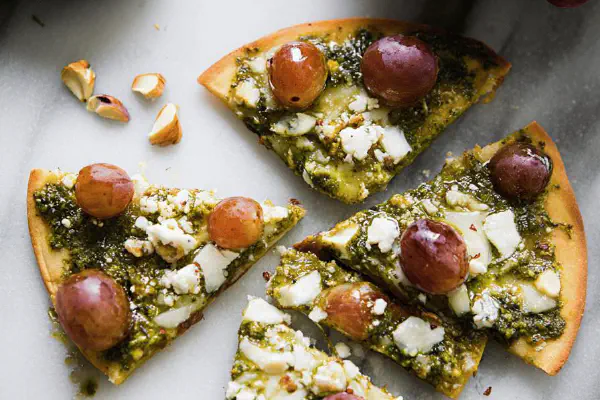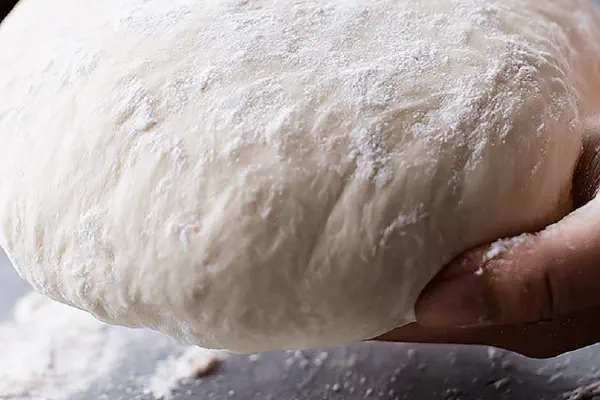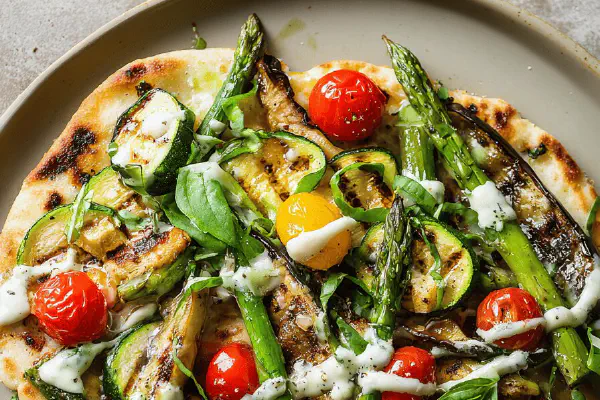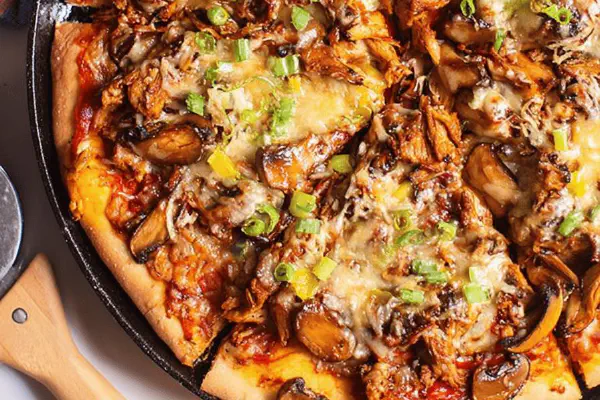Yogurt Flatbreads Twist
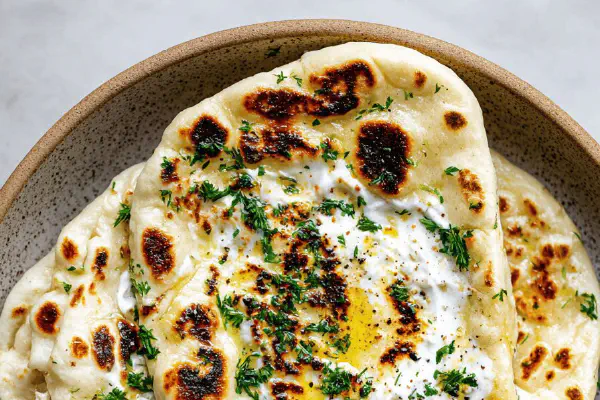
By Emma
Certified Culinary Professional
Ingredients
- 280 g (just under 2 cups) unbleached all-purpose flour
- 12 ml (2 1/2 tsp) honey instead of sugar
- 3 ml (1/2 tsp) salt
- 125 ml (1/2 cup) plain 2% yogurt
- 90 ml (6 tbsp) warm water
- 15 ml (1 tbsp) olive oil
- 4 g (1 tsp) baking powder replaces yeast
About the ingredients
Method
- Start by combining flour, honey, salt, and baking powder in a big bowl. Make a well in the center; add yogurt, warm water, and olive oil. Use a fork to draw flour in slowly till dough just comes together. Sticky, shaggy but manageable.
- Turn dough onto lightly floured surface. Knead by hand around 6 minutes — more than usual. Feel the elasticity developing under your fingers. Smooth, supple dough is the goal, not tough. Use little extra flour if too sticky but don’t dry it out.
- Cover dough with a clean towel. Let rest 45 minutes. No yeast, but resting relaxes gluten, helps aerate a bit.
- Divide dough into 8 equal balls. Shape pebbles, smooth tops with hands. Let them sit uncovered for 12 minutes. You’ll see tiny bubbles on surface—good sign dough is waking up.
- Preheat grill or hot cast-iron pan. Brush grate or pan lightly with olive oil. Important for sticking issues.
- Roll each ball into 15 cm (6 inch) discs. Dust lightly with flour to keep from sticking. Thickness should be even - about 3 mm - not paper-thin. Too thin, they dry too fast.
- Cook 4 flatbreads at a time on grill or pan. Close lid if available. After 2 minutes, watch for puffing - bubbles or small blisters forming. When puffed up, flip carefully with tongs or spatula.
- Cook another 1 to 2 minutes on second side. Should have golden-brown spots, slight char, soft interior. Overcooked = tough, undercooked = gummy.
- Stack flatbreads on plate, cover with clean kitchen towel. Holding moisture and warmth preserves softness.
- Serve warm. Great for wraps or dipping into hummus, tzatziki, or veggie stews.
Cooking tips
Chef's notes
- 💡 Knead dough longer than usual, about 6 minutes or more. Dough feels tacky, not sticky. Watch hand resistance—too little kneading, dough tears; too much, gets tough. Resting helps soften tackiness. Use extra flour sparingly to prevent drying out. Texture matters more than time.
- 💡 Rest dough under towel for 45 mins minimum. Doesn’t rise much but gluten relaxes. If cold kitchen, add time but watch drying. Over-resting—more than 1 hour—start drying crust. Sticky surface after rest? Normal. Visualize bubbles forming later on dough balls.
- 💡 Roll discs to about 3 mm thickness. Too thin, bread dries fast; too thick, dough stays dense. Flour dusting okay, but keep light or patches appear. Thickness uniformity impacts puffing and blistering. Watch edges puff before flipping; signals ready.
- 💡 Cook on very hot grill or cast-iron pan. Sizzle sounds and aroma changes help timing. Bubbles and blisters pop up 2 minutes in usually. Flip when top fully puffed but not bursting. After flipping, 1-2 minutes for golden patches, slight char. No press down, keeps puff intact.
- 💡 Honey replaces sugar adding browning and subtle sweet & floral notes. Baking powder must be measured right; too much bitter. Yogurt choice affects softness—plain 2% or thin Greek style. Olive oil crucial for dough elasticity and grilling; canola optional but less flavor.
Common questions
Why rest dough if no yeast?
Gluten needs relaxing. Rest doesn’t rise much but lets moisture absorb. Makes dough easier to shape. Underrested dough tears and snaps back when rolled. Resting also helps bubbles appear when cooking, adding texture.
Can I use other sweeteners?
Honey brings floral browning, unique flavor. Maple syrup or agave possible but affects color and texture. Sugar works but less depth. Adjust water slightly if substituting thick syrups. Keep sweetener small quantity or bitterness from baking powder more obvious.
What if dough is too sticky?
Add flour bit by bit but sparingly. Sticky dough improves after resting. Over-flouring leads dry flatbreads with patches. Knead longer for gluten development. Warm water helps hydration balance. Sticky dough is better than dry, but manage tackiness.
How to store leftovers?
Stack and wrap in clean towel then plastic or airtight container. Refrigerate up to 2 days. Reheat on hot pan or grill for best texture. Avoid microwave unless covered, can toughen or make gummy. Freeze separated by wax paper for longer storage.
